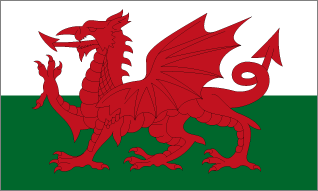When St columba travelled through Scotland around 550 ACE he sought an audience with King Bridei the pictish high king
the irish and the scots spoke languages that were known to Columba namely Gaelic and Celtic
however
he needed an interpreter because the Picts spoke a language he didn't understand
Andaman notes that the Picts were a matrilineal society
the Celts were patrilineal
this is a matter of historic fact and not an interpretation by a historian with a nationalistic agenda 2000 years later
then theres the Dagda
considered to be a Celtic God and a king of the Tuatha Danaan
the Tuatha are linked to the 1700bce period because the legend states that they built Newgrange in ireland and in the 19th century that was dated to 1700bce. this was to bring its construction date in line with Bishop Ushers chronology which states that the world was created by god in 4004bce
but the celts didn't enter england until 400bce and they arrived from the east.
how did they jump to ireland 1300 years earlier or as it actually turns out to the new scientific dating of newgrange how did they jump to 3300bce
so they inherited the Dagda from a different race of people.
who were those people
it wasn't the Gaels because as the say themselves the Tuatha landed in Connaught on the nw coast of ireland and then travelled east
once again i reiterate the celts arrived in england in the 4th century bce and travelled west
After the Tuatha left ireland with the arrival of the milesians in 1600bce they headed east to england and disappear from history altogether
so if the 19th century ecclesiastical dating is accurate how did the Tuatha become the gods of great antiquity in ireland when they'd only been present for 100 years in which time they are attributed with building passage tombs.
One thing the Church did do was changed the status of the Tuatha from Gods (1st commandment "though shalt have no other god but me")
to mythological legend
they also changed the name of the structure in Co Kerry from "Si An Bhru" to Newgrange. "Si An Bhru" means the "stone womb of An"
in ireland the memory of the Tuatha and the twisting of the church changed the name of the Tuatha from Danaan to daoine.
they became the Daoine sidth (pronounced sith)
http://sounds.wavcentral.com/movies/starwars/master.mp3
which in english means people of the fairy mounds.
fairies as you all know are associated with circles
http://www.contemplator.com/tunebook/mi ... rrison.mid
in Presli in north wales the picts settled near a quarry which later turns out to be the source of the bluestones at stonehenge
the Irish already say that the Tuatha built the henges in ireland along with the passage tombs which local legend says they vanished into on their way back home which is the source for the fairy circle connection
in orkney the passage tombs are accompanied by henges as well
Orkney is on the northern tip of scotland and settled by an unkown race in 3500bce who were maritime in nature and believed to have come from scandanavia.
The Tuatha Danaan were also believed to have come from four cities from the north of Britain across the sea. so its either scandanavia, or the north pole. And santa claus being a christianised version of the Slavic god Veles i find that a little unlikely
the Tuatha danaan built henges and passage tombs and were maritime in nature
the celts neither built passage tombs nor henges and certainly weren't a maritime culture
so you have some explaining to do don't you as to how a non maritime race that came from the east in the 4th century which were patrilineal in nature and who never built anything with megaliths could become a matrilineal maritime race in scotland famous for megalithic sites who are known to have spoken an entirely different language
this is all of course without even mentioning what the Picts were really famous for
which the celts weren't
I'm sure you know what that is but didn't mention it because it wouldn't be the cherry picking that we've all become accustomed from you or because you know so little about the subject that you didn't realise that it was important

oh and before you claim this is all a load of new age bollox
its actually all from either
Lebor na Nuachongbála (1150 ACE) written by Áed Ua Crimthainn
Vita Columbae (6th century Ace) written by Andoman
with extras about the purported origins of the Orcadians from the Orkney archaeological trust

